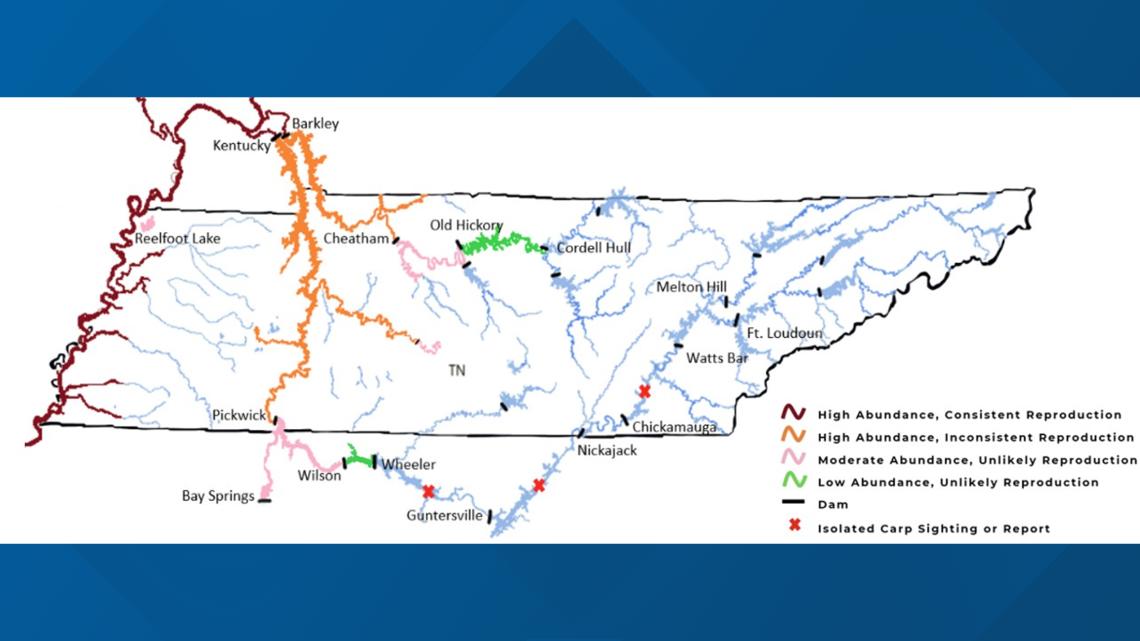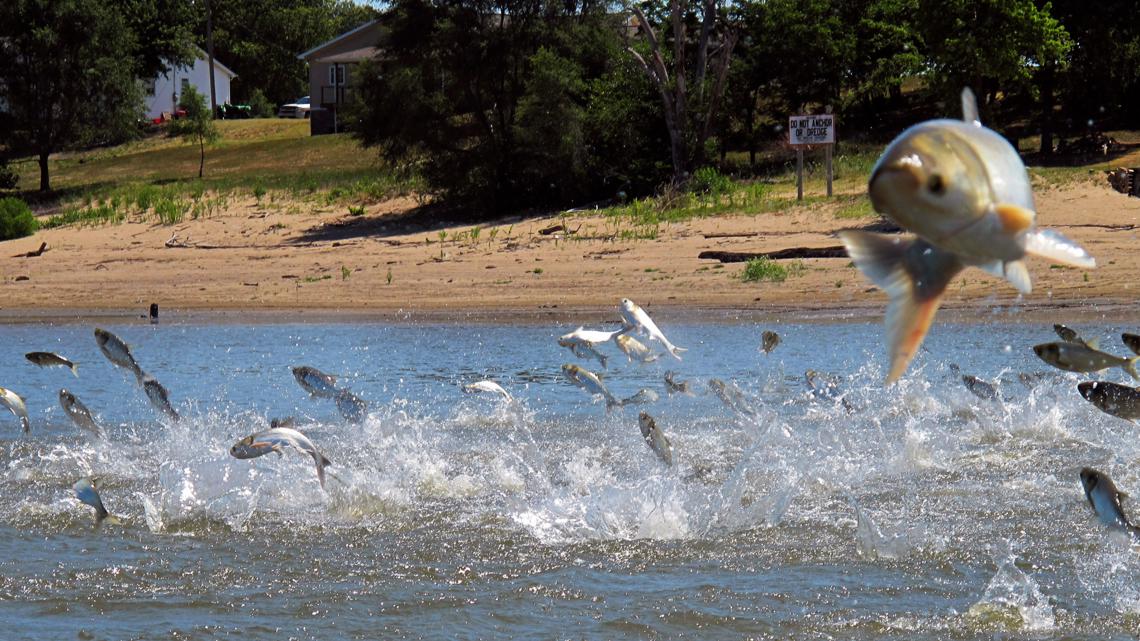KNOXVILLE, Tenn. — A sport many East Tennesseans know and love may be under threat by a new fish in Tennessee lakes and rivers.
According to the Tennessee Wildlife Resource Agency, there are four invasive species of carp in West and Middle Tennessee waters. A Knoxville teen, Trace Nystrom, said the time to care about these carp is right now.
"I think the best part about fishing for me is it just gives me an opportunity to get out there and clear my mind," he said. "It's just a freshwater fishing heaven, here in East Tennessee."
All of the invasive species of carp are from the Yangtze and Amur River systems in China, the TWRA said. These fish were imported into the U.S. for various purposes back as early as the 1970s, with them being unintentionally introduced into U.S. waters in the late 1980s. This introduction occurred when they escaped from aquaculture ponds in the delta areas of the Mississippi River during extreme floods, the TWRA said.
A sport synonymous with East Tennessee could soon see rapid changes as the carp continue to progress across the state.
"The biggest threat to our ecosystem here in East Tennessee is the invasive carp that are currently in Middle Tennessee and working their way up the Tennessee River," said Nystrom. "If the Asian carp were able to spread all the way up into the Tennessee River up here, the property values on the lake lakefront homes would shoot down."


Nystrom was recognized as youth conversationalist of the year by the Tennessee Wildlife Federation, but he said that was not enough.
"I don't think I'll be proud until 10 years down the road from now, there are still no invasive carp here in Fort Loudoun Lake," he said.
Nystrom also had one final message to the invasive carp working their way through the Tennessee River systems.
"Stop reproducing, stop swimming. We need y'all to go belly up, man. We've had enough of you," he said.
TWRA said invasive carp could deplete and alter the current food web of the reservoirs that support natural resources, including recreational and commercial fisheries.
Silver carp
This species of invasive carp eats microscopic algae and zooplankton, TWRA said. These fish are problematic because they compete for food and space with the native species of carp.
In addition to the other problems, silver carp is the only of the four invasive species with the ability to jump as high as 8 feet out of the water. This makes them even more problematic due to their potential capability to injure boaters, considering they can grow to a whopping 60 pounds.
"Silver carp are the ones that when they hear the vibration of a motorboat, they jump out of the air. And you don't want a 40-pound fish hitting your head when you're going 30 miles an hour," Michael Butler, CEO of the Tennessee Wildlife Federation said.
According to the TWRA, the most upstream report of silver carp on the Tennessee River was a fish leaping into the boat of an angler on Chickamauga Reservoir in 2019.
TWRA said the most immediate concern is for the safety of boaters.
"I mean, you'd hate to see that poor dog get smoked by a fish. You'd hate to see it," Nystrom said.


Bighead carp
This species of carp eats the same food as the silver carp, causing the invasive species to compete with other fish that need zooplankton such as shad, buffalofish and paddlefish.
Additionally, bighead carp can grow even heavier than silver carp, growing up to potentially 100 pounds, the TWRA said.
Black carp
This species differs in its diet, focusing on snails and mussels. The black carp was brought to the U.S. to control snails and commercial catfish ponds, TWRA said.
"Snails serve as a host for parasitic worms that get into fish flesh thus making catfish meat unappealing. Eliminating the snails eliminates the parasitic worms," the agency said.
These fish have become problematic because they eat the many species of snails and mussels that are native to Tenessee.
The black carp species can grow up to around 70 pounds.
Grass carp
Grass carp, also known as White Amur, have a different diet than all three of the other species. They instead eat aquatic vegetation, TWRA said.
"This species was introduced into the U.S. to control excess aquatic vegetation (weeds) in commercial catfish ponds," the agency said.
This species of carp is an issue in Tennessee rivers because it eats many types of vegetation that provides cover for a variety of other fish including the bass, crappie and bluegill. This also disrupts the diet of the waterfowl, as it eats the same form of vegetation, TWRA said.
"Grass Carp are increasingly a cause of concern because recent testing of Grass Carp in wild populations has revealed that many of these fish are not the sterile variety, and so they can and likely have been reproducing when they get the right conditions, the agency said.
TWRA said that each time a lock opens and closes, the invasive species have an opportunity to move up and down the rivers.
The Tennessee Wildlife Federation said the two best efforts at fighting this invasive species would be barriers at the dams to stop the spread and to incentivize commercial fishing of the tasty fish.

